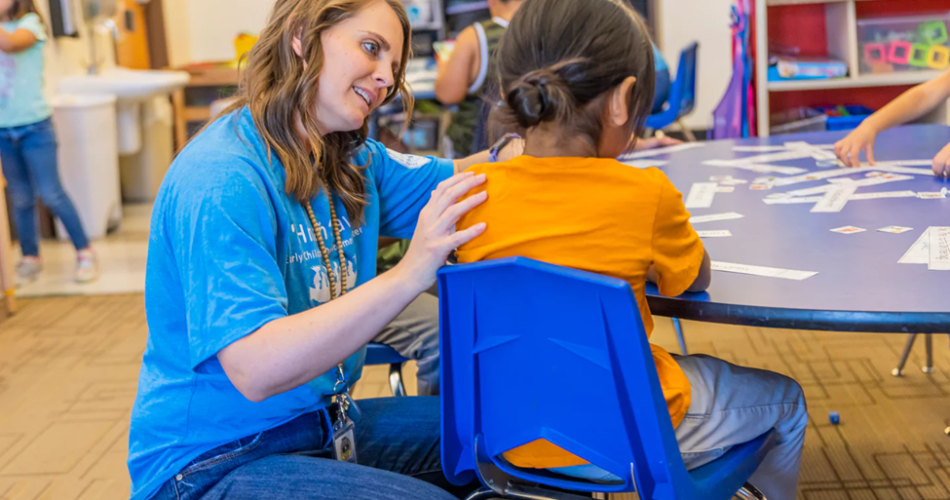Decoding Little Minds: An Early Educators Guide to Understanding Children’s Behaviors
If you have been in early education for any length of time, you’ve navigated behaviors. Behaviors—sometimes called “challenging behaviors,” are when children display a range of difficult actions, emotions or reactions. These behaviors can significantly impact the learning environment. Diverting the teacher’s focus, hindering peer interactions or limiting the learning of the child exhibiting the behaviors. Sometimes it’s all of the above.
Let’s look at behavior a little differently. What is behavior? What does it depend on? How can we begin to decode it?
All Behavior is Communication
What behaviors challenge you the most? As a former toddler teacher, my top challenge was biting. For me, it was incredibly stressful. Thankfully, I learned something that changed my perspective. It even changed how I began to respond. I learned that all behavior was communication. Whether positive (hello—squeals of delight at bubbles!) or challenging (not another biting incident!).
Even as adults, our behavior communicates a message. If I greet a colleague with a warm smile or handshake and ask about their day, I’m communicating that I’m happy to see them and want to get to know them. I’m communicating something different if I walk past them without a greeting. Perhaps I’m unhappy with them, busy or preoccupied with my own concerns.
If adults communicate through behavior, we can also understand this is true with young children. And it’s true whether a child’s behavior causes commotion (throwing blocks, for example) or goes unnoticed (withdrawing from others) in a busy classroom.
Behavior Depends on Development
Some behaviors are particularly challenging in the early learning setting. But many behaviors—even challenging ones—are typical in young children as they develop sufficient language skills to express their thoughts and emotions. When we understand common behaviors of young children, we can respond from a place of awareness while teaching them more positive behaviors.
Below are a few common behaviors and resources to learn more:
- Biting
- Difficulty sharing with others
- Hitting or aggression
- Difficulty following directions
- Running around the classroom
- Difficulty sitting still at circle time
Observe and Learn
As early educators, we can learn to understand the language of children’s behavior through observation and getting to know each child.
- Observe. Often, we notice the behaviors but miss clues to the message behind them. Observing can help us see things we may have missed. Ask a colleague, coach or technical assistance professional to observe a specific child or the time of day when behaviors arise. If you work with another teacher, ask them to lead while you observe. Or video record—just make sure you have the appropriate permissions from families. Take note of the things that happen before a behavior. Take note of the time of day, type of activity and others involved. Watch for potential causes such as hunger, fatigue or boredom.
- Learn from Families. Families can provide a wealth of insight. Getting to know families allows you to be aware of changes that may impact a child’s behavior– such as a move, new sibling or loss. Families may notice behaviors at home or have insight into what motivates or triggers certain behaviors.
- Document. Write down your observations and notes from talking with families. Putting this down on paper can give additional insight and help you identify patterns.
As a toddler teacher with a child who would bite in the classroom, I observed and began to notice patterns. I noticed a toddler tried to bite when crowded with others or when children played rough. They would bite as a reaction because they didn’t have many words to communicate verbally. This knowledge helped me take action to prevent future incidents.
Although behaviors can be challenging, the good news is the teacher can make a big difference!
At Quality First, we love to hear from you. Share your innovative practices to help inspire others. Email us at QualityFirst@FirstThingsFirst.org.
